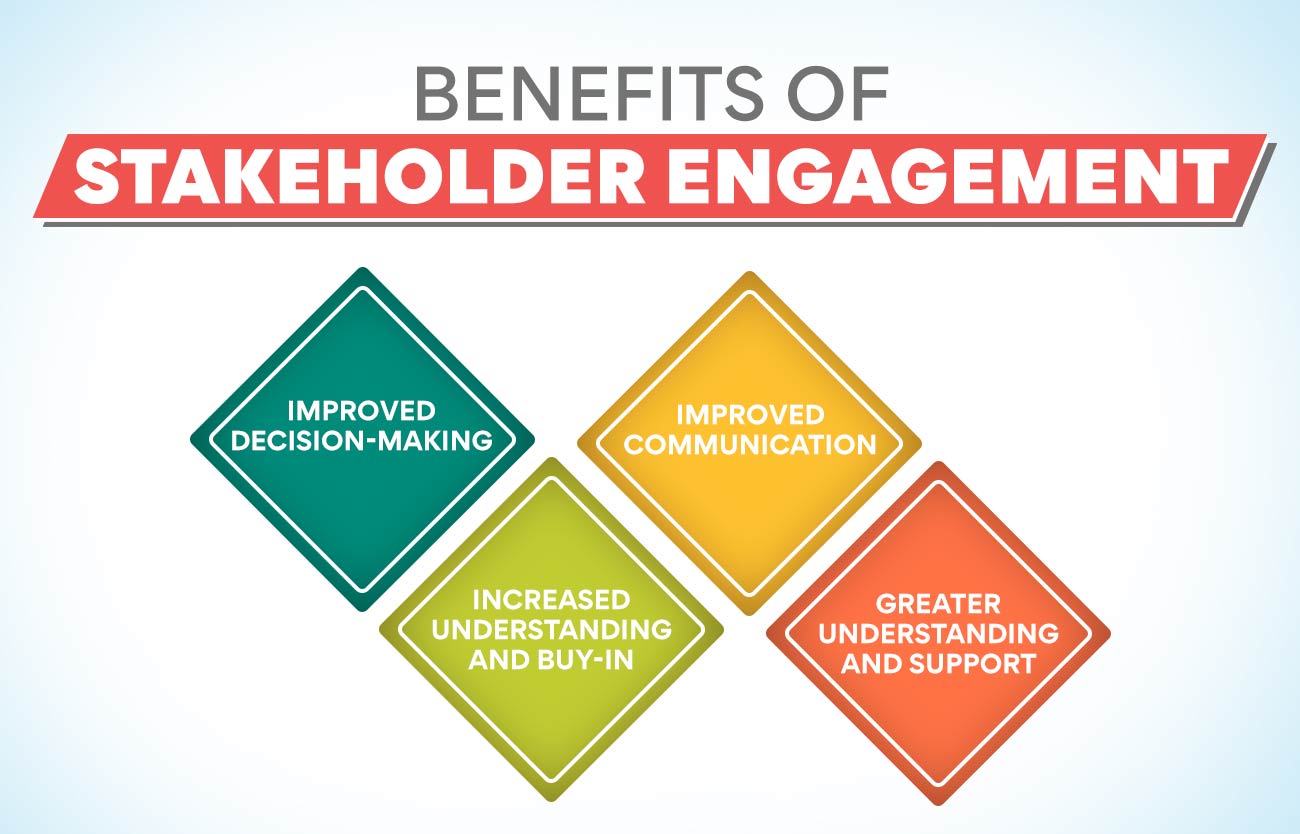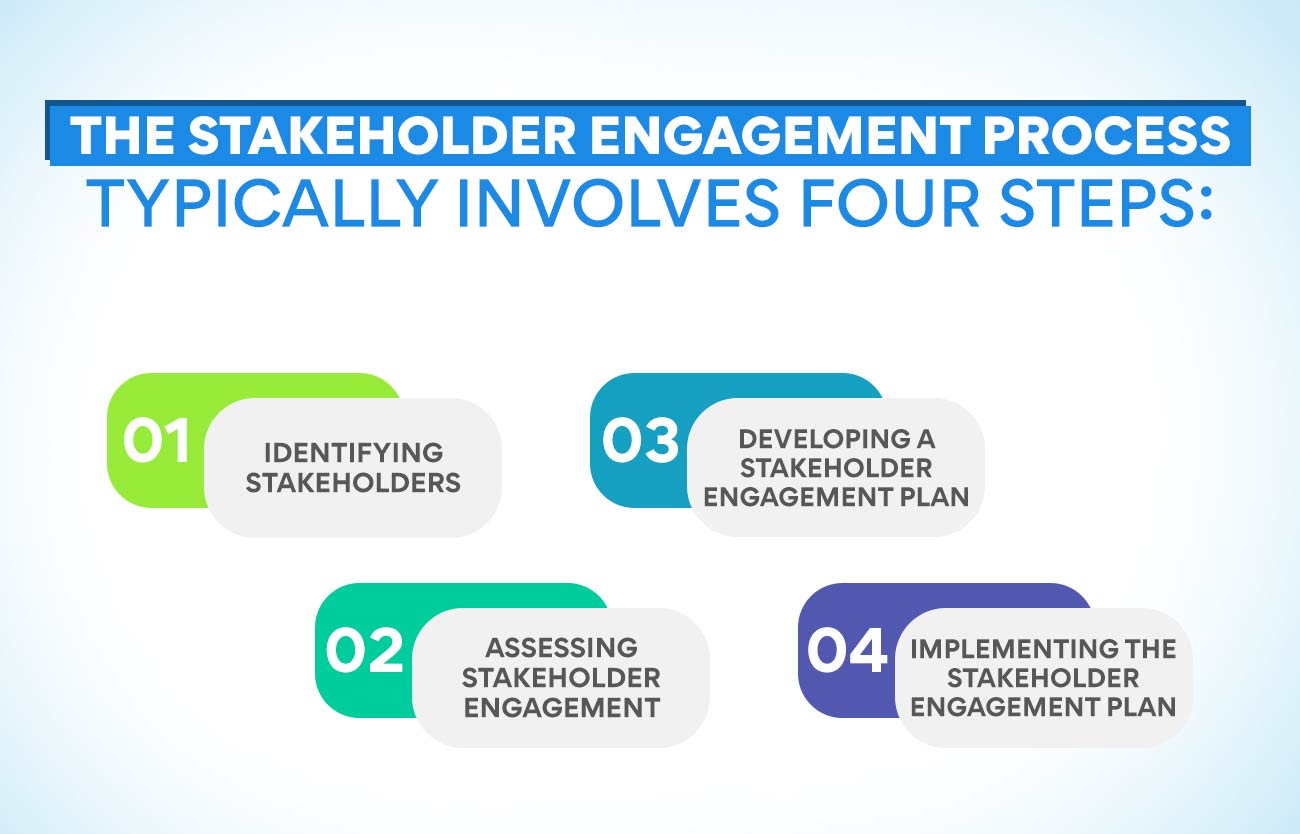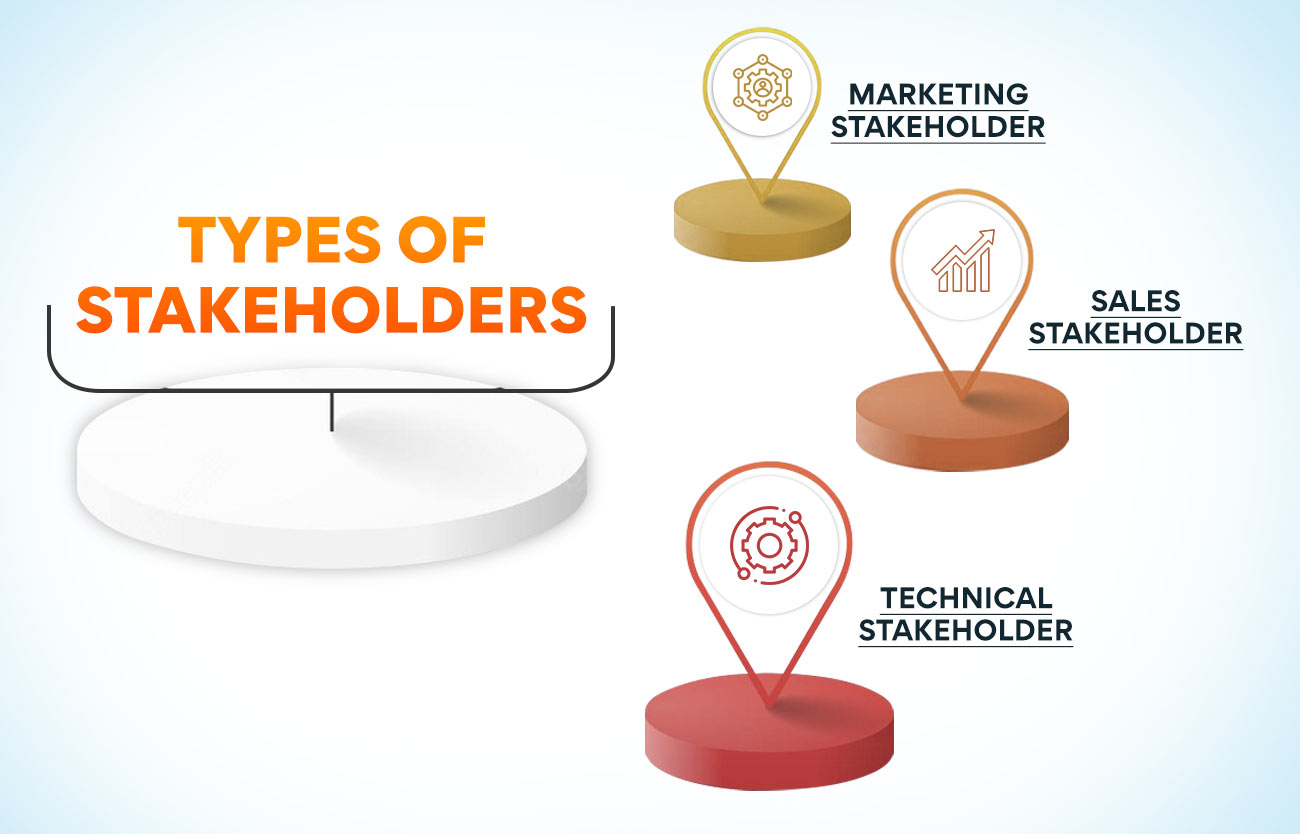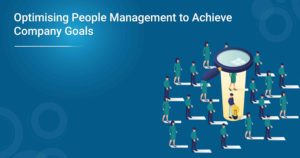What is stakeholder engagement? It is the process of collaborating and communicating with people with a vested interest in the success or failure of your project. When working on a crucial project, it is essential to engage with all of the stakeholders.
When it comes to stakeholder engagement (SE), many organisations struggle with where to even start. It’s a complex process that can seem overwhelming. Still, it’s important to remember that stakeholder engagement is not a one-time event – it’s an ongoing conversation between your organisation and its stakeholders.
In this blog post, we’ll discuss its importance of it and tips for planning and implementing an effective stakeholder engagement strategy.
What Is Stakeholder Engagement?
Stakeholder engagement involves people who may be affected by or interested in an organisation’s activities in the decision-making process. It is a way of involving people early on to get their input and feedback and to ensure that they understand and support the decisions made.
It is stakeholders engagement that can help organisations to:
- Anticipate and manage risk
- Improve communication
- Increase transparency
- Enhance stakeholder relationships
- Make better decisions
Organisations must adopt a strategic approach to SE, and this starts with identifying who the stakeholders are. Once the stakeholders have been identified, the organisation needs to determine what the stakeholder’s interests are and how best to engage with them. Not to forget that the stakeholder engagement process should be tailored to the organisation and the specific project or initiative.
Benefits of SE
Stakeholder engagement holds great prominence in the process of business management. It is highly beneficial for both businesses as well as customers.

There are many benefits to SE, including:
Improved decision-making: By involving stakeholders in decision-making, organisations can make better decisions in different matters. With all relevant perspectives considered, decisions are more likely to be successful and have buy-in from those who need to implement them.
Increased understanding and buy-in: When stakeholders are involved in the decision-making process, they better understand why decisions are being made and are more likely to support and buy into the findings.
Improved communication: SE can help improve communication between organisations and their stakeholders. Stakeholders are given all the updates and are allowed to provide feedback when they are completely indulged in the process.
Greater understanding and support: Stakeholder engagement can help build awareness and buy-in for decisions and trust in decision-making. When stakeholders feel that their input is prioritised and that they have a say in significant decisions, they are more likely to show due diligence toward the organisation’s best interests.
Also Read: Understanding Talent Management And Its Importance
Significance of SE For Strategic Planning
The SE process is critical to any successful strategic planning initiative. Stakeholder engagement ensures that all stakeholders have a voice in the planning process and that their needs and concerns are considered. Furthermore, stakeholder engagement builds buy-in and commitment to the strategic plan and its implementation.
There are many ways to engage stakeholders in the strategic planning process. Some standard methods include focus groups, surveys, interviews, and public forums. It is essential to select the procedure or combination of procedures that best fits the needs of the stakeholder group and the organisation.
The SE process should be customised to the specific needs of each stakeholder group. However, some common elements should be included in all stakeholder engagement initiatives. These elements include:
- Defining the purpose and objectives of the stakeholder engagement process
- Identifying the stakeholder groups that will be involved
- Determining the methods of engagement that will be used
- Developing a communication plan
- Conducting the stakeholder engagement activities
- Evaluating the results of the stakeholder engagement process
A stakeholder engagement process is essential for any organisation embarking on a strategic planning initiative. By engaging all stakeholders in the process, organisations can ensure that their strategic plan meets the needs of all stakeholder groups.
What Is Stakeholder Engagement Strategy?
In business, SE strategy refers to the actions and plans that a company takes to involve important groups or individuals with a vested interest in its success or failure. A stakeholder can be anyone who has something at stake in the outcome of a project, initiative, or decision, such as customers, employees, shareholders, suppliers, partners, and the community.
The stakeholder engagement process typically involves four steps:

Identifying Stakeholders: The first and foremost step is to determine all the individuals and groups who could be influenced by or are interested in your project, initiative, or decision. Identifying stakeholders can be done through stakeholder mapping, a tool that helps you visualise who your stakeholders are, their interests, and how they might be affected by your project.
Assessing Stakeholder Engagement: Once you have identified your stakeholders, the next step is assessing their engagement level. This includes understanding their needs and expectations, as well as determining the best way to communicate with them.
Developing a Stakeholder Engagement Plan: The third step is to create a plan for how you will engage with your stakeholders. This should include a communication strategy and specific tactics for involving stakeholders in the decision-making process.
Implementing the Stakeholder Engagement Plan: The final step is implementing the stakeholder engagement plan. This includes putting into place the communication and involvement strategies you have developed.
The stakeholder engagement strategy should be fine-tuned to the specific needs of your project, initiative, or decision. Stakeholder engagement is an ongoing process, not a one-time event. As such, it should be reviewed and updated regularly.
Key Elements In A Stakeholder Engagement Strategy
The stakeholder engagement strategy involves four main elements:
- Listening to understand stakeholder needs and expectations
- Communicating effectively to ensure stakeholders are kept informed
- Building relationships based on trust and mutual respect
- Managing stakeholder expectations through consultation and negotiation.
Each of these elements possesses its own set of significance, but together they form a comprehensive strategy for engaging with stakeholders.
How To Communicate With Your Stakeholders?
Communication is the key to SE. As mentioned earlier, the stakeholder engagement process is continuous and interactive, so it’s essential to keep channels of communication open at all times. Keep these tips up on your sleeves regarding how to communicate effectively with your stakeholders:
Be clear and concise in your communications: Stakeholder engagement is a complex process. Hence it’s essential to be clear and concise when engaging with your stakeholders.
Be responsive to stakeholder inquiries: It’s essential to be responsive to stakeholder inquiries to maintain a good relationship with them.
Use different channels of communication: There are many other channels of communication available, so it’s important to use the ones that are most effective for your stakeholder group.
Keep your stakeholder informed: Keeping your stakeholder informed of developments in the stakeholder engagement process is a pathway to maintaining a good relationship with them.
The best way to communicate with your stakeholders is to send out stakeholder engagement updates regularly. It will ensure that they catch up with all the updates on the latest developments in the process and will also help to build and maintain a good relationship with them.
What are The Challenges Organisations Face When Trying To Engage With Stakeholders?
One common challenge is simply getting started. It can be difficult to discover where to begin or even to get buy-in from decision-makers on the importance of stakeholder engagement.
Another challenge is planning and conducting practical engagement activities. This includes everything from identifying which stakeholders to engage with, to what methods or tools to use, to how to measure success.
Finally, once engagement activities are underway, it can be challenging to keep up the momentum and ensure that they continue to be effective. This often requires an ongoing investment of time and resources, which can be challenging to sustain.
Despite these challenges, SE is vital for any organisation that wants to achieve its goals. By taking the time to understand the requirements and concerns of those affected by our work, we can make better decisions, avoid potential problems, and create more sustainable solutions.
Also Read: Key Fundamentals of Human Resource Management
How Can Stakeholder Engagement Make Or Break Your Business?
There’s no denying that stakeholder engagement is critical to the success of any business. After all, without buy-in from key stakeholders, it can be difficult to implement change, reach goals, or even just get started. Stakeholders are the individuals who have a vested interest in your business and its success or failure. They can be customers, employees, shareholders, or even the community where your business is located.
While SE is essential for all businesses, it’s especially critical for small businesses. That’s because small businesses often don’t have the same resources as larger businesses. They may not have the budget for extensive market research or a large marketing team. Small businesses rely more on word-of-mouth and personal relationships to attract and retain customers.
All of this means that SE is essential for small businesses. But how can small businesses ensure that they’re doing it effectively?
SE is a continuous activity involving people who have a stake in your business in decisions and activities that affect them. The goal is to get input from stakeholders and build relationships with them.
There are a few key reasons why stakeholder engagement is so important for small businesses. First, it can help you make better decisions. When you involve stakeholders in the decision-making process, you’ll be able to get valuable input and feedback. This can help you avoid making decisions that could alienate or anger your stakeholders.
Second, stakeholder engagement can help you foster relationships. Strong relationships with stakeholders are essential for small businesses. They can provide valuable networking opportunities, help attract and retain customers, and even give you access to capital.
Finally, stakeholder engagement can help you create a positive reputation for your business. When stakeholders feel they’re being listened to, and their input is valued, they’re more likely to speak positively about your business. It will attract new customers and partners, and it can even lead to increased sales.
So now that you know why stakeholder engagement is so important, how can you ensure that you’re doing it effectively? Here are a few tips:
- Make sure you’re clear about your goals. What do you want to achieve through stakeholder engagement? Make sure your goals are realistic and achievable.
- Be prepared to listen. Stakeholder engagement is all about listening to what others have to say. You may not always agree with what you hear, but listening with an open mind is important.
- Be transparent. When you are communicating with stakeholders, be honest and upfront about your business. Share both the good and the bad news.
- Follow through on your commitments. If you say you are going to do something, make sure you do it. This will build trust and credibility with your stakeholders.
Stakeholder engagement is a critical part of running a successful business. By following these tips, you can ensure you are doing it effectively.
What is The Role of An HR Professional In Stakeholder Engagement?
The role of HR in stakeholder engagement is pivotal. As the link between employees and management, HR professionals are uniquely positioned to build relationships and trust between different organisational groups.
Through effective stakeholder engagement, HR can help create a positive work environment where employees feel valued and respected. It will lead to increased creativity and productivity and a reduction in turnover.
When planning and implementing stakeholder engagement initiatives, HR professionals should keep the following points in mind:
- Define the goals of the engagement initiative. What are you hoping to achieve?
- Identify key stakeholders. Who will be most affected by the initiative?
- Develop clear communication plans. How will you keep everyone informed about the initiative?
- Set realistic timelines. Don’t try to achieve everything too quickly.
- Monitor and evaluate progress. Are you achieving your goals? What could be improved?
Principles of Stakeholder Engagement

Communication
Good communication is the essence of any successful stakeholder engagement strategy. After all, how can you hope to engage with your stakeholders if you don’t have a clear and effective way to communicate with them?
Some key principles can help you ensure that your communication with stakeholders is as effective as possible:
- Be clear and concise in your communication. Make sure your brand message is clear and easy to understand. Use simple language and avoid jargon.
- Be responsive to stakeholder queries. If stakeholders have questions or concerns, make sure to address them in a timely and helpful manner.
- Be transparent in your communication. Share information openly and honestly with stakeholders without hiding anything or trying to spin things in a positive light.
- Keep your communication channels open. Ensure stakeholders have multiple ways to contact you and receive updates from you (e.g., email, social media, website, etc.).
- Seek feedback from stakeholders regularly. Ask for input from stakeholders regularly, and use that feedback to improve your engagement strategy over time.
Empathy
When it comes to stakeholder engagement, empathy is key. By understanding the needs and perspectives of all stakeholders, organisations can develop more effective strategies for engaging with them.
Empathy allows organisations to see the world through the eyes of their stakeholders and understand their unique needs and concerns. By developing this understanding, organisations can only hope to truly engage with their stakeholders in a way that meets their needs.
Organisations that lack empathy for their stakeholders are likely to find themselves at a disadvantage regarding engagement. By contrast, those that take the time to understand their stakeholders’ perspectives are more likely to be successful in developing relationships and achieving their engagement goals.
Risk Management
Risk management is identifying, assessing and managing risks to an organisation’s capital and earnings. It is a key component of stakeholder engagement, as it allows organisations to identify and manage potential risks that could impact their business operations or reputation.
Risk management is a vital part of any organisation’s overall strategy, as it helps to protect against potential losses that could jeopardise the company’s financial stability. By engaging with stakeholders and understanding their concerns, organisations can identify and mitigate risks before they materialise. In doing so, companies can safeguard their earnings and reputation while also maintaining a positive relationship with key stakeholders.
Take Responsibility
As the principle of stakeholder engagement, it is the stakeholder’s responsibility to ensure that all stakeholders are consulted and engaged throughout the process. This includes ensuring that their input is considered in decision-making and that they understand the decisions made.
They are also responsible for managing stakeholder expectations and ensuring they are kept informed of developments. They need to be clear about what we can and cannot commit to and be transparent in our communications.
And finally, never forget that stakeholder engagement is a two-way process. Listen to what stakeholders say and take their feedback on board. Only by doing this a strong trust can create lasting relationships.
Types of Stakeholders

Marketing Stakeholder
A marketing stakeholder is interested in how a company markets its products or services. It could be a current or potential customer, a supplier, a business partner, or even a competitor. Marketing stakeholders may have different objectives and needs, but they all want to see the company succeed in its marketing efforts.
Engaging with marketing stakeholders is vital to ensure your marketing strategy is on track and achieving its objectives. Marketing stakeholders can provide valuable insights into what works well and what could be improved. It also allows you to get feedback and input from those most likely to be affected by your decisions.
There are many different ways to engage with marketing stakeholders. You can hold one-on-one meetings, focus group discussions, or even survey them online. The important thing is to keep the lines of communication open so that you can continue to find out from each other and work together to achieve success.
Sales Stakeholder
As a business grows, the number of stakeholders increases. The term “stakeholder” generally refers to anyone interested in the company, including shareholders, employees, customers, suppliers, and the community.
A stakeholder can be anyone affected by a company’s decisions or activities. A stakeholder can also be someone who can influence the decisions or activities of a company. Sales stakeholders are usually interested in the revenue and profitability of a company.
Sales stakeholders may include sales managers, sales representatives, and channel partners. They may also have distributors, retailers, and wholesalers. A company’s marketing department may also be considered a stakeholder if it sets sales goals and objectives.
The goals of sales stakeholders often conflict with other stakeholders. For example, shareholders may want to maximise profits, employees may want to maximise job security, and customers may want to maximise value for their money.
Sales stakeholders typically have a shorter-term perspective than other types of stakeholders. It is because they are most concerned with meeting quarterly or annual sales targets. However, it is essential to engage with sales stakeholders regularly so that they understand the company’s long-term vision and how their efforts contribute to achieving it.
Technical Stakeholder
A technical stakeholder has a chartered interest in the success or failure of a project due to their expertise in a particular area. Technical stakeholders can be both internal and external to an organisation.
Internal technical stakeholders are usually company employees who are working on the project. They have a detailed understanding of the project’s goals, objectives, and deliverables. Their input is critical to the success of the project.
External technical stakeholders are usually consultants or contractors hired to provide their expertise to the project. They may not have the same level of detailed knowledge as the internal technical stakeholders, but their input is still essential.
Technical stakeholders should be involved early on in the project planning process. Their input will help ensure that the project’s goals and objectives are achievable and that the deliverables meet their expectations.
By following these best practices, HR professionals can play a momentous role in ensuring that stakeholder engagement initiatives are successful.
Now that you know HR professionals have a significant role in an organisation, how about stepping into those shoes? For kickstarting your career as an HR professional, spare some time to check our Post Graduate Certificate in Human Resource Management which takes a deep dive into the matters of human resource management.
More Information :
Breaking Down The Scope Of Human Resource Management
Key Objectives of Human Resource Management
Role Of Human Resource Management in an Organization
Nature and Objectives of Human Resource Management
Evolution Of Human Resource Management: Past and Future





























